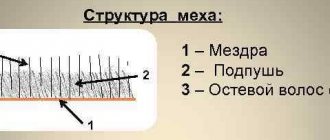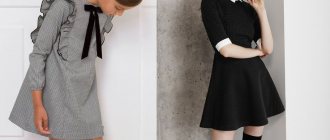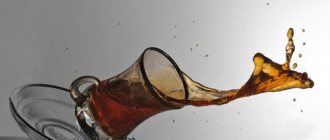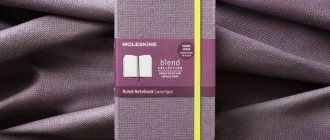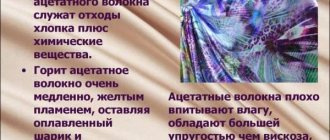The Moleskine trademark belongs to the Italian company Modo&Modo, which produces various stationery products. However, initially Moleskine was a small stationery production company located in the French town of Tours.
After it closed, it would be about 10 years before the notebook, so beloved by creative people, returned to store shelves. Thanks for this we must say to the Italian Maria Sebregondi, who was not afraid to restart production and bring the fashion for handwritten notes to a new level.
About the creation of the Moleskine brand
The Moleskine brand is truly unique in many aspects. Its history is also unique. Officially, the brand that produces the much-loved notebooks appeared in 1997. However, the concept and design of the black-bound notebook is over 150 years old. The thing is that long before the birth of the company, notebooks similar to Moleskine (the design of which the creators of the Italian brand tried to rethink) were produced in a small stationery shop in the town of Tours, in France. The store did not survive the transition to electronic media and closed in 1986.
But the notebooks, which according to legend were used by Picasso, Ernest Hemingway , Van Gogh , Sartre and other artists, could not just sink into oblivion. After 11 years, Maria Sebregondi, who will become the founder of the modern Moleskine brand, will try to revive the fashion for laconic and so attractive notebooks in black binding.
Maria Sebregondi
Maria was born in Italy. Her mother worked as an editor and graphic designer, and therefore the girl, willy-nilly, became interested in literature. In 1995, she was reading a work by Bruce Chatwin, and one phrase caught her attention. In it, the author wrote that losing a notebook is a real disaster, because he wrote all his books in notebooks, manually numbering each page and indicating his two addresses on the cover, so that if a stranger found the notebook, the latter could return it to its rightful owner.
In the same work, Sebregondi came across another interesting detail. Chatwin complained that the shop where he bought his favorite notepads had closed and production of unique stationery had stopped. He bought about 200 notebooks (all that was left with the owner). The writer called these notebooks moleskine (which literally means “mole skin” in English - a colorful epithet describing the cover of the notebook).
The impressionable Maria, who also had highly artistic taste, decided that this was definitely a sign. She researched the history of the production of the very notebooks that Chatwin wrote about. Her little office detective work led her to the Picasso Museum in Paris, where she saw the master's famous notebooks, which were similar in description to those Chatwin had spoken about. Then Maria found Hemingway's journals, which also turned out to be similar to the journals of Picasso and Chatwin. Almost the entire history of avant-garde culture of the 20th century revolved around laconic black notepads with an elastic band.
Then Sebregondi decided to take a serious step. She decided to revive the production of notebooks so beloved by geniuses and turned to the design and publishing company Modo&Modo for help. Together they resurrected the once-forgotten brand and launched the production of updated Moleskine notebooks.
Properties
At first glance, Moleskine seems like ordinary cotton fabric, but it is not. Thanks to the tight and dense weaving, as well as various protective impregnations, the fabric has a number of positive properties.
- High strength, density and wear resistance of the material, which allows you to sew from it high-quality clothing both for special needs and for daily wear.
- Good breathability and hygroscopicity are due to the natural composition of the fibers.
- Protective properties against the penetration of small particles of dust, flour, metal or glass shavings, which plays an important role when creating uniforms for enterprise workers.
- Moleskin does not catch fire thanks to special fire-resistant impregnations.
- Easy to wash and clean clothes and moleskin.
- The matter does not accumulate static electricity and does not attract dust.
Of the shortcomings, only a couple can be highlighted: the flowability of the fabric on the cut during cutting of the product; and the rigidity of the texture, which makes the material difficult to pierce with a needle and rough to wear.
Little black notebook
The world has literally gone crazy over seemingly simple and laconic notebooks. And this is in the age of widespread computerization. By 2004, Sebregondi and her Moleskine entered the Japanese market and then spread throughout Asia.
In 2006, the French investment fund Société Générale Capital bought out Modo&Modo SpA and changed the brand name to Moleskine Srl.
In 2007, the brand decided to move to a new stage in the development of the design of its notebooks. In addition to the classic black models, notebooks with bright colored covers were added to the range.
In 2011, Moleskine expanded its production. They are adding new stationery items used for reading and writing to their regular collections. This expansion has allowed the brand to gain a foothold in markets in more than 95 countries around the world. Moleskine is actively starting to produce limited collaboration collections based on famous films, TV series, music and art works.
At the beginning of 2021, the brand announced that it was opening its own cafe with the same name in the largest cities of the world - Beijing, London, New York, Hamburg and, of course, in Milan, where Moleskine itself comes from.
1 of 6
Types of Moleskine
Moleskin fabric differs in density and presence of impregnations, hence the differences in the way it is used. The manufacturer indicates information about the density and presence of impregnation on the stamp (on the canvas itself) and on the label.
- From 26 -YUD. This is the densest moleskin with a density of 350 g/m2. It is used for sewing workwear that does not allow small particles to pass through.
- From 27 -YUD. The density is 250 g/m2, the fabric does not allow chemical fumes to pass through and is suitable for clothing intended for chemical plants and gardening.
- From 28 -YUD. The average density of the material is 280 g/m2, treated with a fire-resistant coating. This material is used in making protective clothing for enterprises where there is a risk of fire.
Product Features
The first notebook released under the Italian brand had dimensions of 9x14 and all the iconic attributes of classic Moleskine. It is these attributes that distinguish notebooks of this brand from other notebooks; it is these characteristics that many modern brands are trying to reproduce, trying to create an analogue of a notebook from “mole skin”:
- black leather cover;
- slightly rounded corners;
- pocket at the end of the book;
- fabric bookmark sewn to the cover;
- slightly yellowish pages;
- an elastic band that holds the pages or sides of the cover together;
- sticker with individual serial number;
- card describing the brand's history.
Modern Moleskine has retained almost all of the listed attributes. However, some items may vary depending on the characteristics of a particular collection. For example, a classic black cover can be replaced by a bright color one or have a print dedicated to a specific collaboration (for example, embossing the Lonely Mountain and the dragon in a limited edition dedicated to The Hobbit). The situation is similar with inserts, which can be thematic.
1 of 3
Backpack
Case for phone
Travel Accessories
Application
A wide variety of things are sewn from moleskin of different colors, compositions and densities.
For industrial enterprises, special clothing is sewn that protects against dust, dirt and small particles. Also protective suits for fishing, hunting and gardening, because even chemicals that are harmful to humans and poison insects do not penetrate through this material. Moleskin fabric with fire-resistant impregnation is used for sewing protective clothing where there is a risk of fire in the enterprise.
Military uniforms made of moleskin are a common occurrence. Such clothes do not take a long time to rub, do not wash, they are not hot in the summer and they do not catch fire.
For everyday wear, moleskin is used to make stylish jackets, jackets and coats with insulation and lining. The material, which is simple in appearance, is complemented with trim from another fabric and decorated with accessories in the form of buttons, zippers, rhinestones and embroidery.
Other areas: covers for car, bus and airplane seats - they retain their original appearance for a long time, they are easy to clean, and most importantly, no small dirt will penetrate through them. The upper part of shoes is often made from universal moleskin, and it is also popular as a material for book bindings and as a basis for artificial leather.
Moleskine in Russia
Domestic filmmakers have not yet demonstrated their love for these notebooks. Fans of Russian cinema have so far been able to notice the classic outlines of moleskine only in one film - “Antikiller D.K.: Love Without Memory.” However, we should hope that Moleskine’s creations will still be appreciated by our cultural representatives and the situation will change.
In the meantime, everyone can purchase thematic notebooks, weeklies and albums dedicated to cinema (including excellent quality notebooks from the Hobbit, Star Wars series, etc.) in the Moleskines.ru online store and enjoy their amazing quality.
Moleskine le magnifique
| Moleskine is known even in Japan |
Naturally, the cult brand Moleskine, born in France, simply a priori had to be present in European cinema. Moreover, in a movie that is not just widely known, but truly masterpiece. And the most striking confirmation of this was, without a doubt, an epoch-making film with a far from trivial and organic plot, which was awarded an honorable second place in the list of the hundred best films of world cinema - “Amelie”.
One of the most striking means of expression used by Jean-Paul Genet in his film was the Moleskine diary, in which the heroine Audrey Tautou planned her good deeds. And this is understandable, because in every Moleskine product lives the memory of the great Van Gogh, the extraordinary Dali and the brilliant Picasso.
Moleskine also appeared in the fourth part of the cult modern French action comedy Taxi.
Advantages and disadvantages
The main indisputable advantage of this fabric is its increased strength and ability to protect when working with harmful and hazardous materials. In addition, the unique material has a completely natural composition, which allows the body to feel comfortable in any conditions.
Pros:
- strength and wear resistance;
- durability;
- naturalness;
- the material provides sufficient air exchange;
- does not get wet, has a water-repellent property;
- protects from fire, dust, metal particles, as well as from radioactive and biological influences;
- easy to care for;
- does not deform;
- low price.
Minuses:
- crumbles a lot when cutting;
- very dense and inelastic material;
- may shrink when washed with hot water.
To create workwear, fabrics in gray, brown and marsh green shades are usually used. Travel clothing such as jackets may have a camouflage print. Moleskine is usually painted in the most basic shades, which do not show dirt, which makes the material even more practical.
